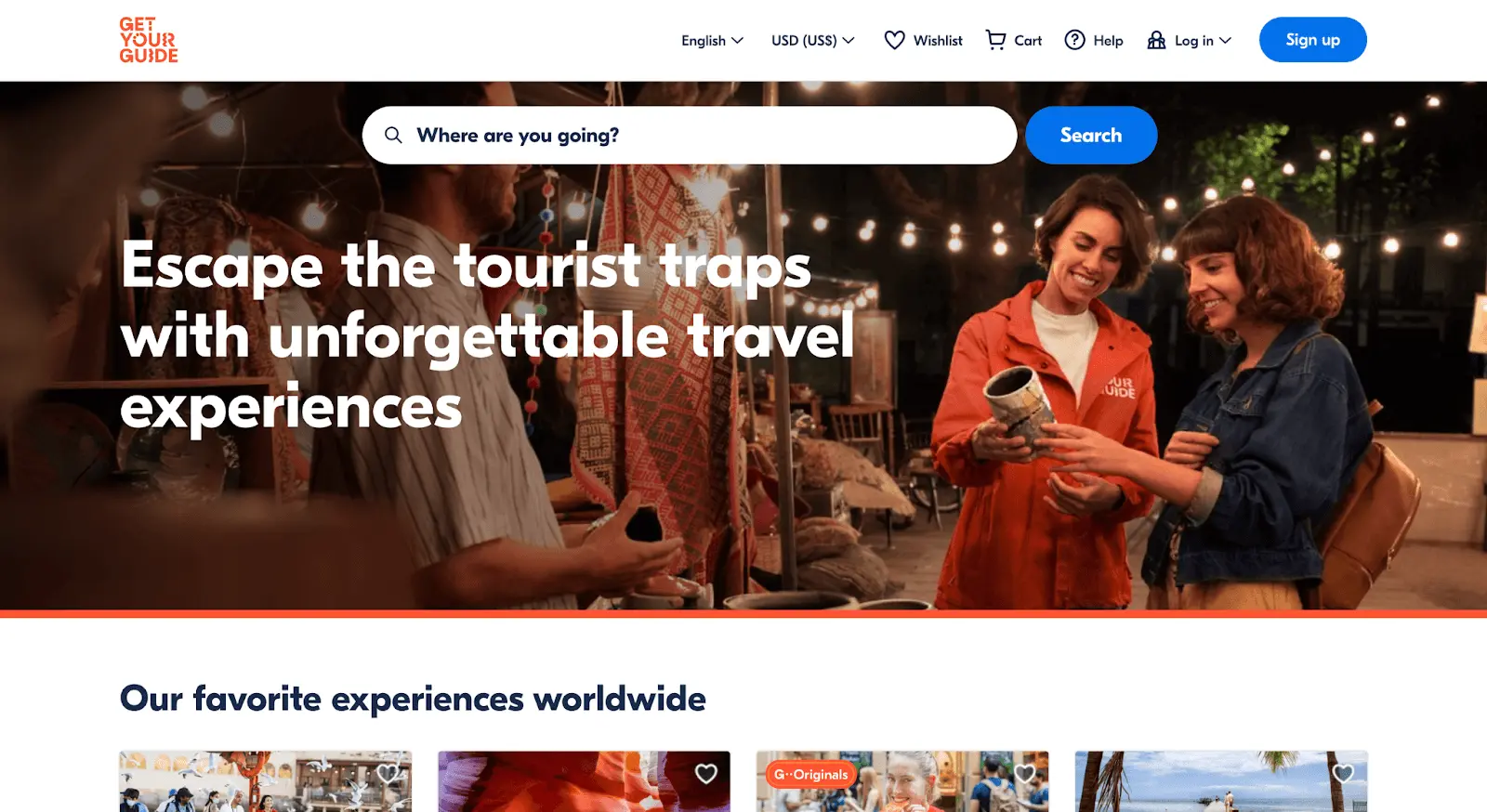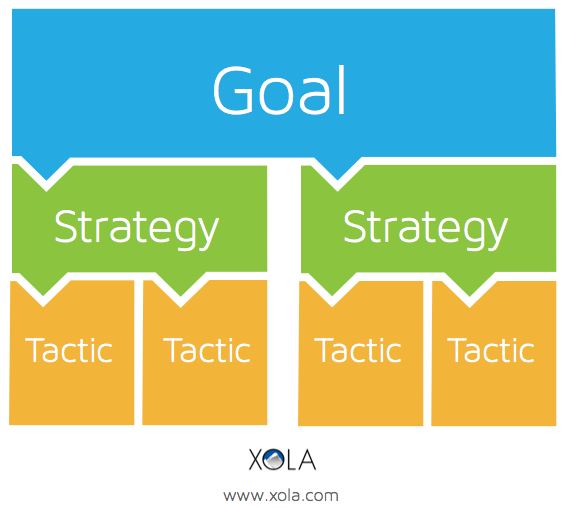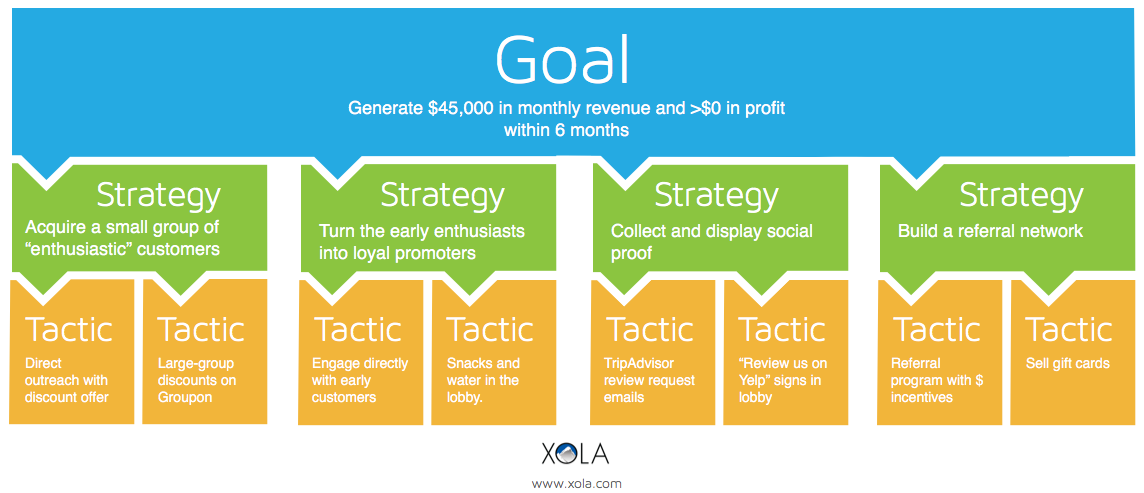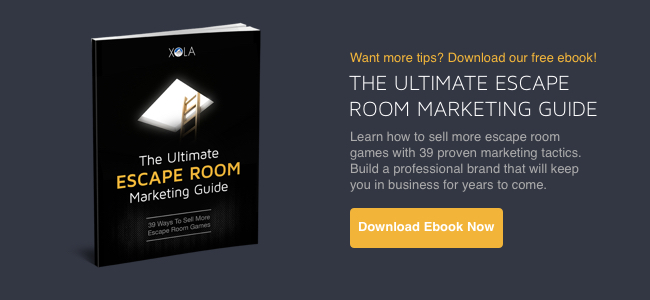
Finding the right marketing tactics can feel like trying to solve an escape room puzzle…
There are hundreds of tactics you could use to market your escape room business from SEO to paid Facebook ads. The problem is, if you pick the wrong ones you will end up tired, frustrated, and with a shrinking bank account.
If you want to get more bookings, you need to define your marketing goals and strategy. Then, develop and execute a plan.
To get started, we recommend checking out the state of the escape room industry report to uncover the top booking and marketing trends in 2019. This report is backed by extensive research on successful escape rooms. It covers topics like:
- Uncover the biggest booking and revenue changes in the last 12 months
- Discover the hottest marketing and advertising tactics
- Get insights into up-and-coming marketing channels
After reading the ebook, you’ll understand which marketing tactics work best for escape rooms.
But remember: Every escape room is unique. Some are just getting started and some have been established for years. Some have 1 room and some have 7. So before you go spend your entire marketing budget on Google Ads, you need to figure out the tactics which work best for your escape room.
To get there, let’s review some business fundamentals.
Back to the Basics: Goals, Strategies, and Tactics
Before you develop a marketing strategy for your escape room, you should understand the difference between goals, strategies, and tactics. Here is a quick refresher:
- Goal– an observable and measurable end result for your business. (e.g. increase revenue by 25%).
- Strategy– your overarching vision or plan for achieving your goal. (e.g. increase # of repeat visitors to increase revenue per customer)
- Tactic– a method for implementing your strategy. (e.g. send 1-time customers coupons via email to encourage repeat visits).
Many marketers fail to distinguish between strategies and tactics. Sadly, this is one of the main reasons marketing campaigns fail. If you pick your tactics before your goals and strategies, you risk wasting a lot of time on marketing that just plain doesn’t work for your business.
Take a look at the diagram below. Instead of taking a “bottom-up” approach, focus on your goals and strategy first.
Define your goal
Your business goal(s) should be SMART:
- Specific– Does your goal refer to a concrete and specific area of your business? (e.g. revenue)
- Measurable– Can you measure your goal using quantitative or qualitative data? Can you measure your progress using a measurable target? (e.g. 25% increase in revenue)
- Attainable– Can you (or your employees) actually achieve this goal?
- Relevant– Does the goal apply to a specific problem faced by the company?
- Time-related– What is your deadline for achieving your goal?
Here is an example of a SMART goal:
- 2x monthly revenue by the end of Q4 (December 31).
An example of a goal that isn’t ideal is – “Grow my business,” because it is vague, not time-related and difficult to measure.
Keep in mind that your SMART goal does not have to be perfect. There is still guesswork involved. But if your goal is SMART, you can measure your progress against your goal. You will know when to change course if you begin to veer off track or aren’t making progress. You will know when to turn on the gas if progress is going well.
Develop your strategy
Your strategy describes how you intend to reach your goal. It should be broad enough that it does not prescribe specific marketing tactics (“run Facebook ads” is NOT a strategy), but specific enough that it describes:
- Who you are targeting to reach your goal.
- How you will target them.
Example: Increase revenue by turning 1st-time buyers into repeat purchasers.
Choose your tactics
Once you defined your goals and strategy, you can begin choosing between the tactics available to you. I suggest referring to this escape room marketing ebook for tactical ideas. Browse through the table of contents, pick out the tactics that fit your strategy, then get to work.
Here’s an example…
Let’s pretend we just launched a new escape room. Our main concern is keeping the lights on and developing a sustainable revenue stream. We need to grow our business, but can’t go over budget.
GOAL – Generate $30,000 in monthly revenue and >$0 in profit within 6 months.
STRATEGY #1 – Identify and acquire a small set of enthusiastic customers.
TACTIC #1a – Identify escape room enthusiasts in the area (via blogs, Facebook groups, quora, etc.) and offer them a discount to try the room.
TACTIC #1b – Distribute flyers at pub crawls, intramural sports leagues, and other organized group events.
TACTIC #1c – Offer large-group discounts.
TACTIC #1d – Identify and reach out to escape room influencers and offer them a free game in exchange for sharing their experience with their audience.
TACTIC #1e — Introduce the concept to new corporate groups at events and in local business networks.
STRATEGY #2 – Turn the early enthusiastic customers into loyal promoters.
TACTIC #2a – Involve early customers in design and business decisions by asking for feedback. Make them feel like a friend or advisor instead of a customer.
TACTIC #2b – Run a debriefing at the end to answer questions, discuss puzzles, and give groups who “lost” a sense of completion.
STRATEGY #3 – Collect and display social proof to encourage more “conservative” prospects to buy.
TACTIC #3a – Send automated emails to customers asking for reviews on TripAdvisor.
TACTIC #3b – Encourage customers to review your room on Yelp by posting “Review us on Yelp” signs in the check-in area.
TACTIC #3c – Offer an extra 5 minutes in the room if the group likes your Facebook page before starting the game.
STRATEGY #4 – Build a referral network.
TACTIC #4a – Give current customers an incentive to invite friends through a referral program.
TACTIC #4b – Offer gift cards so that customers can buy them for friends and family.
Here it is in visual form.
Notice how the goal and strategies affect which tactics I choose to use in my marketing efforts? Because my escape room had a limited budget, we focused on tactics that cost more time than money. Because I have well-defined goals and strategies, I can safely experiment with different tactics and change tactics if they aren’t helping me reach my goals.
Looking for more escape room marketing ideas?
Here are a few extra resources if you want to learn more:
- The 2019 Escape Room Industry Report [Free Whitepaper] This includes an entire section on marketing and paid advertising insights.
- Check out about a dozen more articles in our escape room marketing resources.
Last updated – 8/22/19









